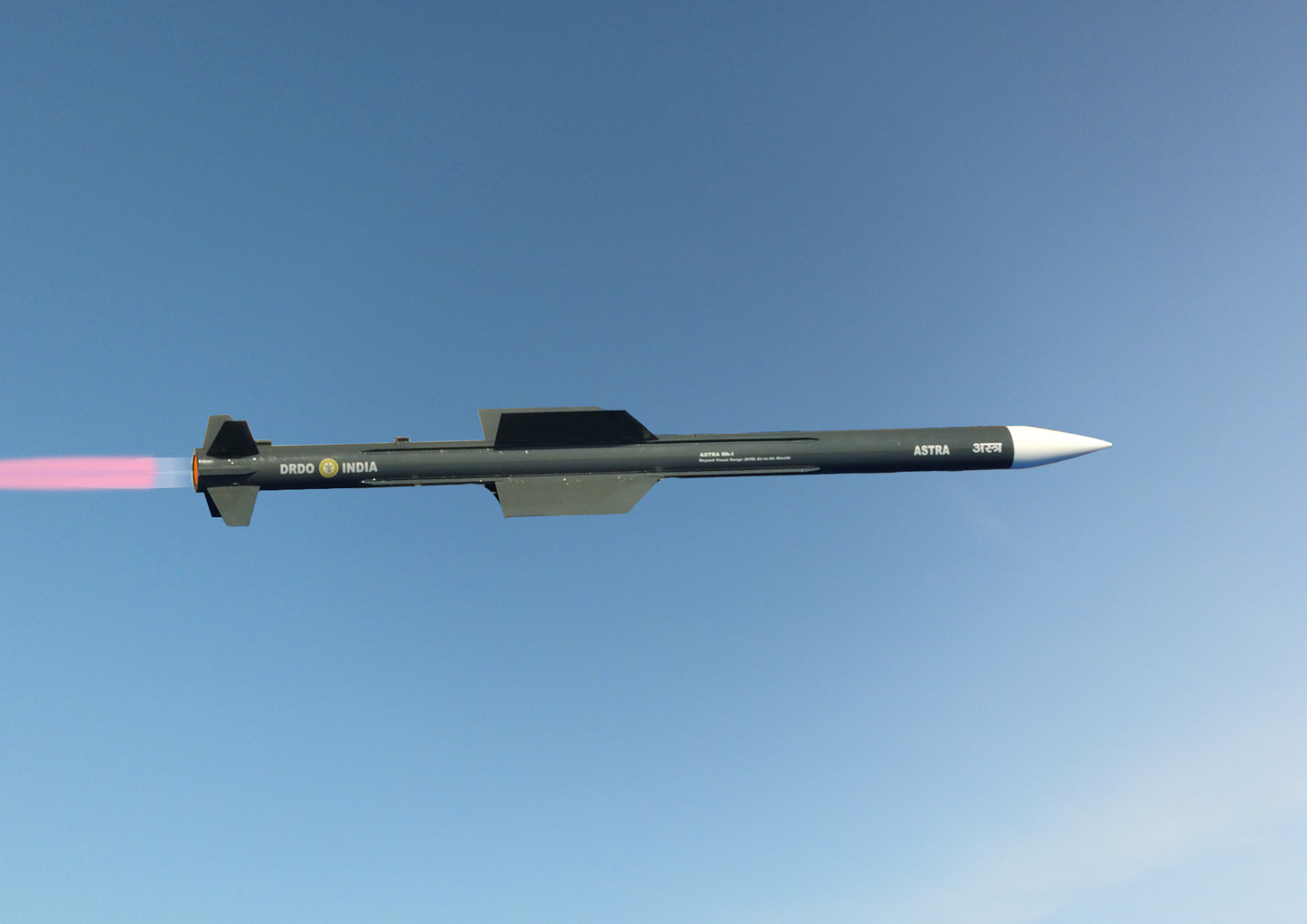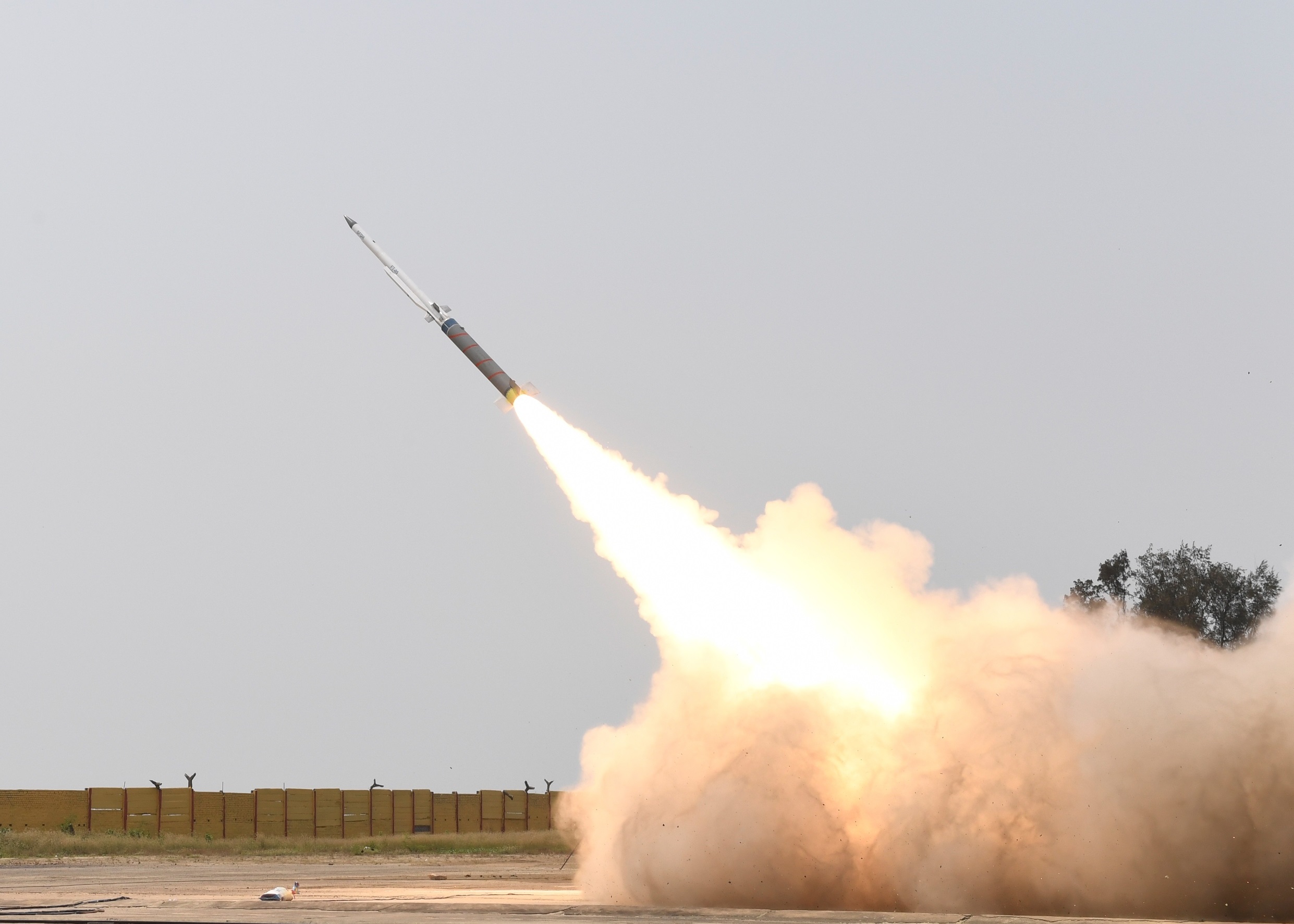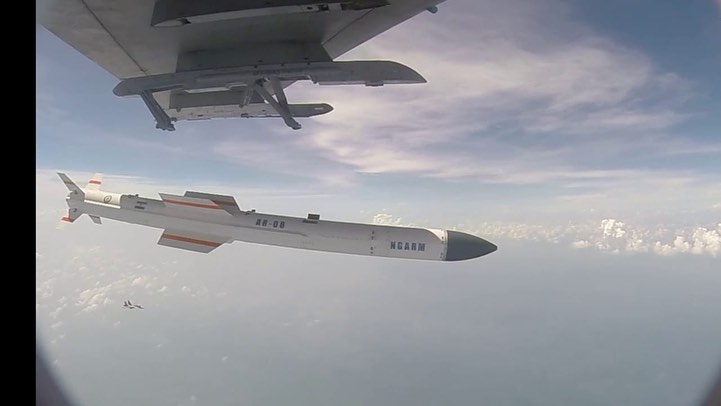A test campaign will soon be launched to test the capabilities of smart air-launched weapons developed by the Indian industry, such as air-to-air missiles, anti-radar missiles and glide bombs.
Under the slogan «Make in India», the Asian giant is making a major technical/economic effort to significantly reduce its dependence on foreign advanced weapons systems by boosting and promoting its own domestic defense industry.
One of the fundamental objectives of this state policy is the development and local manufacture of the greatest possible quantity and variety of smart aviation weaponry; to this end, several projects are underway to equip the Su-30MKI, Tejas, MiG-29UPG, Rafale and the AMCA, the country’s future fifth-generation fighter aircraft.
According to The Times of India, the weapon systems to be tested are:
Astra Mk1
It is a medium-range, active radar-guided air-to-air missile developed to replace the previous generation of semi-active guided missiles and the Russian R-77 active-radar missiles.
The Astra Mk1 would have a range of 80 to 100 km, a speed in excess of Mach 4, a locally developed Ku-band active radar guidance system (the first missiles used the guidance system of the Russian R-77 missile) and a 15 kg warhead.
This missile was successfully tested on more than one occasion, and the Indian Air Force has already placed an initial order for 250 missiles to arm its Sukhoi Su-30MKI heavy fighters. Integration work with the MiG-29UPG and Hal Tejas is currently underway.
Astra Mk2
This version presents notable exterior changes with respect to the Mk1, with an aerodynamic configuration similar to the Israeli Derby or Barak 8 missiles.
Astra Mk2 dual pulse pic.twitter.com/l0RonGmaQh
— Kuntal Biswas (@Kuntal__biswas) December 25, 2019
Another important aspect of this new variant is that, unlike the Mk1 version, it uses a dual-pulse solid fuel rocket motor to extend its range to 120/150 km. The first boost accelerates the missile to its maximum speed, and then the second rocket propellant is ignited, to sustain that speed.
The Astra Mk2 will have its first test launch from an Su-30MKI during this test campaign, following the completion of its transport, handling and separation tests.
Astra Mk3
It will be the longest-range version of the Astra missile family. The objective is to achieve a weapon capable of intercepting enemy aircraft more than 300km from the launcher aircraft, flying at speeds in excess of mach 4 (up to mach 7, depending on the source).
To achieve these performances, the Mk3 will make use of a Ramjet type propulsion system, analogous to the European METEOR, which has a declared range of 200km.
The engine and aerodynamic configuration of the Astra Mk3 are being tested with ground launches, with the first airdrop expected by the end of the year.
Rudram anti-radar missiles
It is an anti-radiation missile development line, designed in India to be able to attack enemy air defense radar installations from a safe distance.
The Rudram 1, with a range of up to 150 km, would have its first test launch later this month.
India’s Defense Research and Development Organization (DRDO) is also developing Rudram 2 and 3, which will have a range of 250 km and 550 km, respectively. These missiles will have an INS-GPS navigation system and a passive seeker RF warhead to guide the final strike.
Testing of the Rudram 2 should also begin this year.
SAAW (Smart Anti-Airfield Weapon)
The SAAW smart munition, designed to attack airfield runways and reinforced hangars, as well as bunkers and radar stations, will continue its test campaign this year.
DAC has approved SAAW for Airforce and Navy pic.twitter.com/RMWd6SWHE2
— SSR (ATAGS ka parivar) (@singhshwetabh71) September 28, 2020
This 125 kg glide bomb can be carried in multiple racks to saturate the target area from safe distances (maximum range of 100 km). An Su-30 can carry up to 32 of these small smart bombs. It has an INS/GPS navigation system, to which electro-optical infrared terminal guidance kit (EOIIR) can be added.
A heavy glider bomb, with a range of 80 km and a weight of 1,000 kg, is also being developed.

















